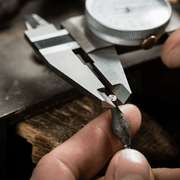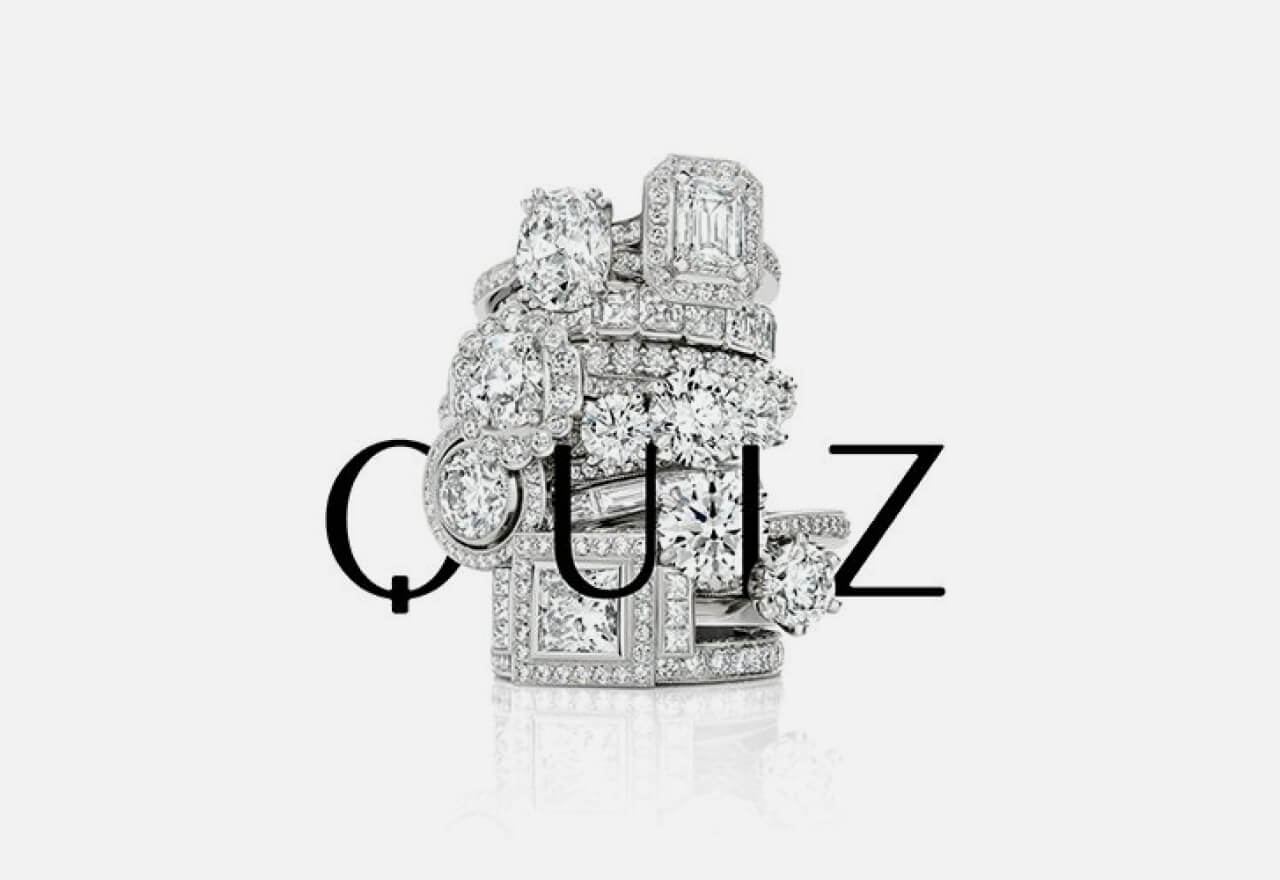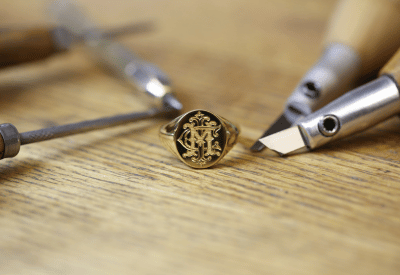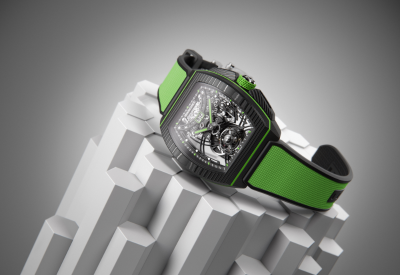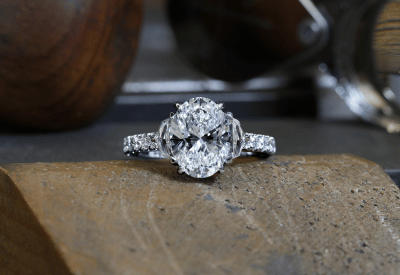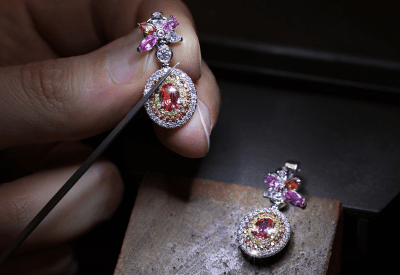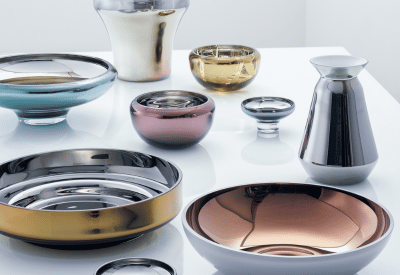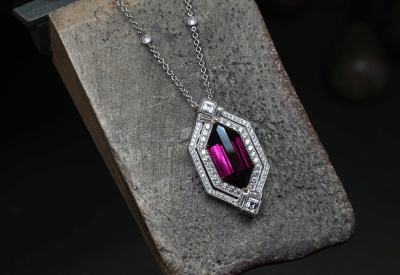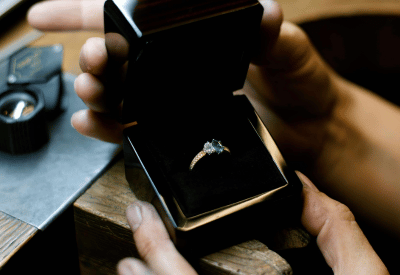Of the four C’s, when choosing a diamond carat weight is the element that’s usually most discussed. “How many carats is it?” is one of the most common questions a woman will get asked when showing off her diamond engagement ring. So it’s helpful to understand what is actually meant by the term, and how it can impact the quality, rarity and value of a diamond.
The term ‘carat’ originates from a Greek word meaning “fruit of the carob tree”. Originally, the seeds of the carob pod were used as the standard for measuring diamond weight, as the size of the seeds were almost always identical. Today, the universally understood standard diamond carat weight is 200 milligrams.
Diamond carat refers to the weight of the cut stone, rather than the size. A diamond’s carat number is based on a point system where 100 points equates to one carat. This means that a 50 point diamond equates to a half-carat diamond, and so on. The use of the point system means that a diamond can be weighed using exceptionally precise measurements, rather than just whole numbers.
Importantly, when there is more than one diamond on a ring, necklace, or other piece of jewellery, such as a three-stone pendant, the stones are weighed together.
The most crucial thing to remember is a large carat weight does not necessarily reflect the size of the diamond. While a diamond may appear bigger, it may weigh less, which means it’s fewer carats.
The weight of the diamond largely influences its price. Larger diamonds are more rare and more desirable, and as such will have a higher cost price. In fact, fewer than one in one million mined stones are large enough to produce a one-carat diamond.
DETERMINING SIZE
When it comes to determining how a diamond’s carat weight corresponds to its actual size (or volume), you need to consider the carat in relation to two factors
- The dimensions of the diamond’s surface (the crown).
- The quality of cut.
The dimensions of the crown refers to the surface area of the top of the diamond. It’s significant because when worn, a diamond is always viewed from the top.
In terms of quality of cut, it’s all about making sure the diamond is not cut too deep or too shallow, as this will impact the size and brilliance of the overall stone. Cut too deep, and some of the carat weight will be hidden in the base, making it appear smaller than it actually is. In turn, if cut too shallow, light will leak through the bottom and the diamond will lose some of its brilliance.
What this means is when choosing a diamond, don’t just go for the one with the highest carat. If cut incorrectly the visual appeal of the diamond is reduced, at which point the carat expense is no longer worth it.
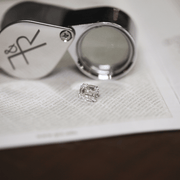
CHOOSING THE RIGHT WEIGHT
When choosing the carat of your diamond you need to take into account the other three C’s, as the overall value of your diamond is dependent on all four factors combined. Additionally, there are a few other things to consider.
When it comes to rings, you need to first examine the size of the finger and determine the size of your desired setting. Large diamonds can sometimes look out of place on delicate fingers, and the setting will largely impact the weight and appearance of the diamond. For example, if you’re clustering diamonds together, you may choose diamonds with a smaller diameter and weight. Some settings can also “swallow” your diamond, which means you’ll have to choose a larger stone for visual appeal. Additionally, the smaller the finger the larger the diamond will actually appear, so you may be able to get away with a 0.80 diamond, rather than a full one-carat.
When it comes to settings, not all diamond shapes and sizes will suit or fit. If you want a particular shape or size, best to choose your diamond first and then choose a setting that suits the stone. If you already have the setting chosen, it’s best to consult with your jeweller.
Your budget needs to be stretched across the four C’s. For example, if a large carat weight is most important to you, you may then need to choose a diamond of less clarity. It’s best to find a diamond which balances the four C’s, rather than favours one or two components.
A good tip to remember is diamond prices jump significantly at particular intervals – namely, the half and full-carat weights. Choosing a diamond slightly below those values, for example 0.90-carat, will cost significantly less than a one-carat diamond, when just looking at a price-per-carat basis. And the best thing is, the small size difference will almost be impossible to detect to the naked eye!
Additionally, it’s important to note that two diamonds of the same weight will not necessarily be the same price. The other three C’s – cut, clarity and colour – play equally significant parts as well.
